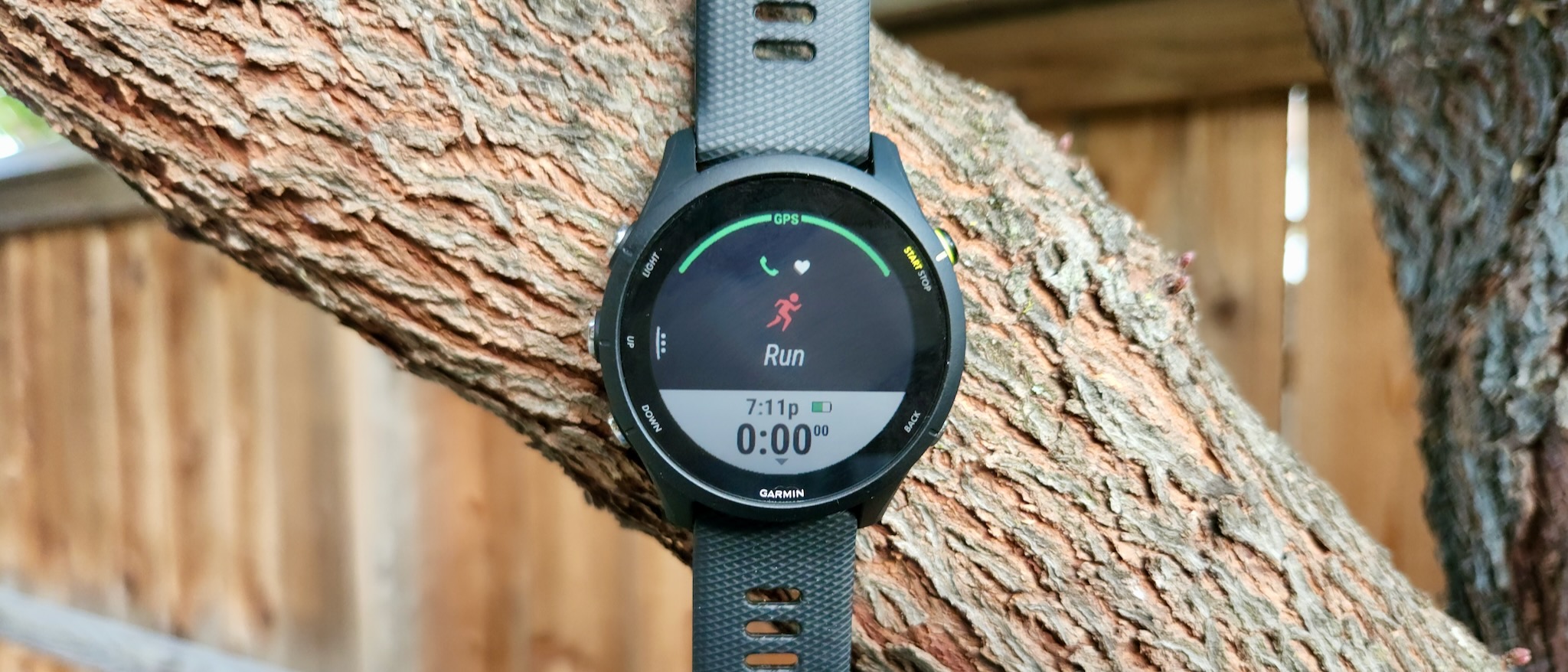Android Central Verdict
Whether you're looking to hit a PR or just push yourself to run more frequently, the Forerunner 255 is an advanced runner's tool that gives you exactly as much value as you put into it. It can effectively guide you to train smarter and improve your form, with health and GPS-tracking tools that were previously reserved for Garmin watches that cost twice as much. Its battery life is impressive, too, though that corresponds with a fairly thick design.
Pros
- +
14-day/30-hour battery life
- +
All-systems and multi-band GPS tracking
- +
Two compelling size options
- +
Tons of training planning & effect widgets
- +
Running power measurements on watch
- +
Adds altimeter & NFC over 245
Cons
- -
Thick, noticeable design
- -
Squishy buttons
- -
Lacks touchscreen & maps of Forerunner 955
Why you can trust Android Central
Garmin has released literally dozens of Forerunner watches over the years, with higher numbers corresponding to improved features and quality. We always considered the Forerunner 245 the best runner's watch for most people, but the upgrades the 945 offered were difficult to turn down. With the entrance of the Garmin Forerunner 255 into the fray, the numbering scheme has almost become obsolete.
The Forerunner 255 is anything but an iterative upgrade, addressing many of the flaws of its predecessor, from its average battery life to the missing altimeter for properly calculated effort. Its software is largely the same, but does add new widgets that make your running data much more readily available, without diving into the app. Having tested it for over a month, it's a huge step up over past Garmin Forerunners with much higher numbers, in other words.
It isn't without its flaws, and Garmin has a tempting upgrade in the Forerunner 955 if you have even more money to spend. But compared to the other excellent Garmin watches available today, the Forerunner 255 has very few peers. And that also applies to running watches from other popular brands.
Garmin Forerunner 255: Price, availability, and models
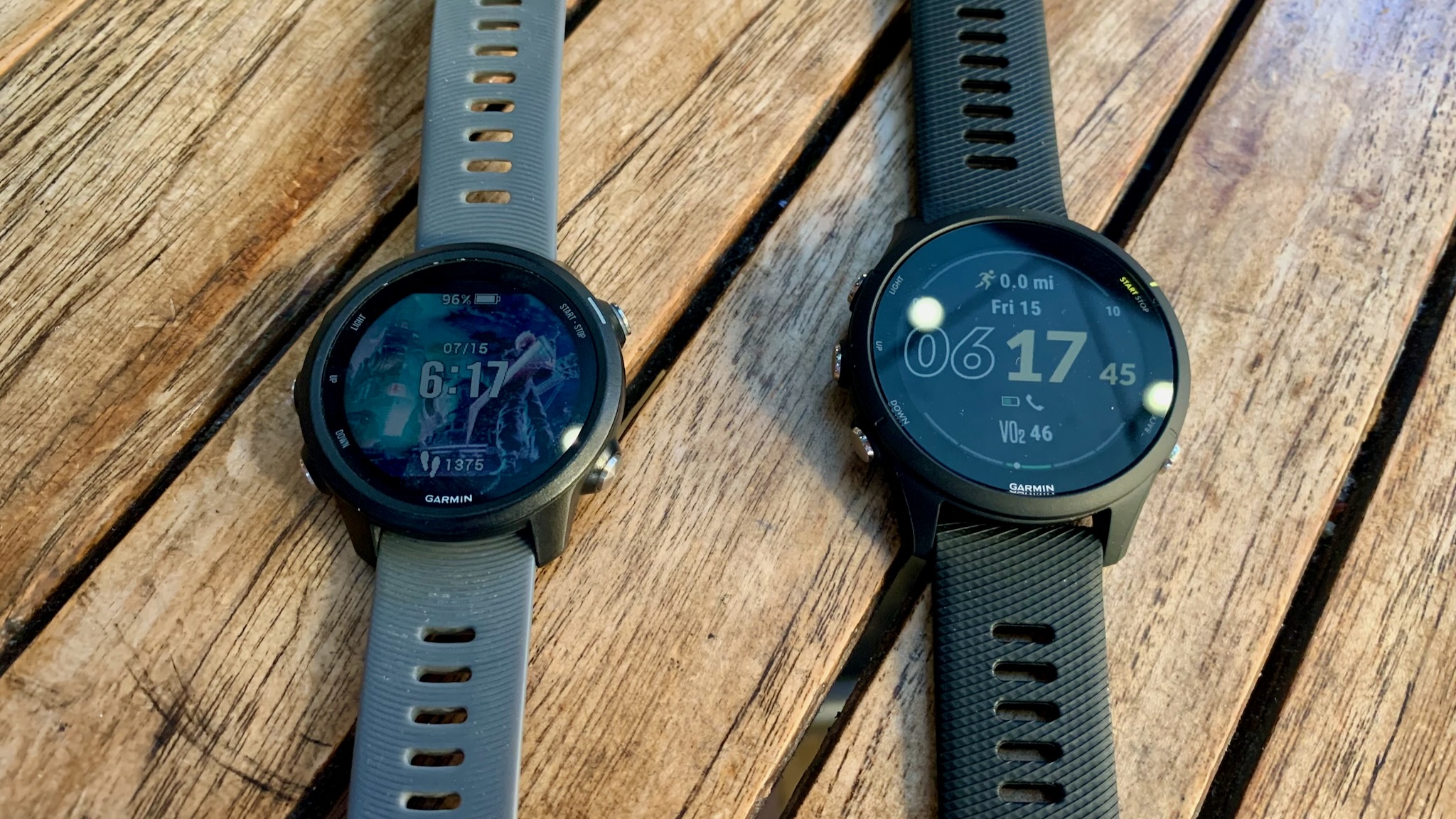
Garmin launched the Forerunner 255 on June 1, 2022, with a starting price of $350 for the standard models, and $400 for the models with music storage. You can find the watch at several electronics and fitness retail stores, as well as on Garmin's own site.
The Garmin Forerunner 255 and Forerunner 255S share all of the same features and tools, but the 255S is smaller; it's designed for "wrists with a circumference of 110-175 mm," according to Garmin. Meanwhile, the 255 fits "wrists with a circumference of 130-205 mm." The 255 ships in Tidal Blue and Slate Gray (near-black), while the 255S comes in Light Pink and Powder Gray (silver-gray).
The Forerunner 255 has a 1.3-inch display, while the 255S has a 1.1-inch display. The actual pixels-per-inch ratio is nearly the same for both (284 vs. 280), but the 255 does make content more readable at a glance.
The extra size makes it weigh 10 grams more, but also leaves room for a longer-lasting battery, both in smartwatch mode (14 days vs. 12 days) and in GPS-backed tracking (30 hours vs. 26 hours). Still, the 255S' battery beats most competing watches in this area, so it isn't a serious downgrade.
Lastly, both model sizes come with a Music upgrade, with either Whitestone or Black finishes. Again, both have identical features and battery lives to their non-music counterparts. But using music storage burns through the battery quickly, which may affect which model you choose. Specifically, the 255 Music lasts up to seven hours with GPS-backed music, while the 255S Music only lasts up to six hours.
Garmin Forerunner 255: Hardware, Sensors, and Design

Before this Forerunner 255 review, I tested out the stylish, touch-enabled Garmin Venu 2 Plus and the barebones, never-ending Instinct 2 Solar. Despite their many differences, Garmin has a consistent throughline in its most recent devices: They have faster menuing, improved battery life and sensor accuracy, and added software features compared to the previous generation.
But while the 2nd-gen Venu and Instinct models got thinner than their predecessors, the Forerunner 255 is 0.7 millimeters thicker (0.2mm with the smaller 255S) than the 245. It's still 1.5mm thinner than the Forerunner 955, but it certainly has a hefty profile on your wrist. That's something long-time Garmin fans won't mind, but anyone used to narrower fitness trackers or lifestyle watches may resent.
In practice, the watch weighs about the same as many premium running watches; which is to say it's noticeable, but doesn't quite drag down your wrist as a larger Forerunner or Fenix would. I have found it will occasionally catch onto furniture or doorways, in a way other watches wouldn't.
Thankfully you can count on the Gorilla Glass 3 to prevent most scratches, but you may want to invest in a third-party screen protector — though I couldn't find many compatible models on Amazon as of yet.
I'm strongly considering buying myself the Forerunner 255S to cut down on the size a bit, even if it means trading away screen space and battery life. I'll discuss in the next section why I love the current display, but I think many people will ditch that perk willingly for a more compact fit that's better suited for sleep tracking.
| Category | Garmin Forerunner 255 specs |
|---|---|
| Materials | Fiber-reinforced polymer |
| Display | 255: 1.3-inch (260x260) MIP; 255S: 1.1-inch (218x218) MIP |
| Bands | 255: 22mm (industry-standard); 255S: 18mm (industry-standard) |
| Dimensions & weight (255) | 45.6 x 45.6 x 12.9mm; 49 grams/1.73 ounces |
| Dimensions & weight (255S) | 41 x 41 x 12.4mm; 39 grams/1.38 ounces |
| Sensors | GPS, GLONASS, GALILEO, HRM, barometric altimeter, compass, gyroscope, accelerometer, thermometer, SpO2 |
| Connectivity | Garmin Pay, Bluetooth, ANT+ |
| Music Storage | Only with 255 Music ($50 surcharge) |
| Sport Profiles | Running, Outdoor Track Running, Treadmill Running, Indoor Track Running, Trail Running, Virtual Running, Ultra Running, Strength, HIIT, Cardio and Elliptical Training, Stair Stepping, Floor Climbing, Indoor Rowing, Pilates, Yoga, Hiking, Skiing, Snowboarding, XC Classic Skiing, Stand Up Paddleboarding, Rowing, Biking, Indoor Biking, Mountain Biking, eBiking, eMountain Biking, Pool Swimming, Open Water Swimming |
| Colors | 255: Tidal Blue, Slate Gray; 255S: Light Pink, Powder Gray; 255 Music/ 255S Music: Whitestone, Black; |
Compared to the 2019 Forerunner 245, the Garmin Forerunner 255 has had its hardware modernized. It now supports tap-to-pay via NFC, adds a barometric altimeter to properly measure your effort in regards to changing elevation, and logs your heart rate variance (HRV) while you sleep to get a proper measurement of your stress levels and Body Battery recovery.
That last feature is thanks in part to the Elevate v4 sensor, the latest heart rate monitor (HRM) that Garmin claims is more accurate than previous models. In practice, I had the same quality of results I found on the Venu 2 and Instinct 2, which is to say highly accurate for an optical HRM. Compared to the Polar H10 chest strap I use for comparison, their outputs were identical the vast majority of the time.
This isn't to say your older Garmin watch is inaccurate, as the 245 did quite well in our tests years ago. This increased accuracy mainly benefits "serious" athletes who need total accuracy for training, and want to ditch those chest straps for good. But for non-Garmin users, you'll see a significant precision boost by leaving behind whatever budget fitness watch or lifestyle watch you currently use.
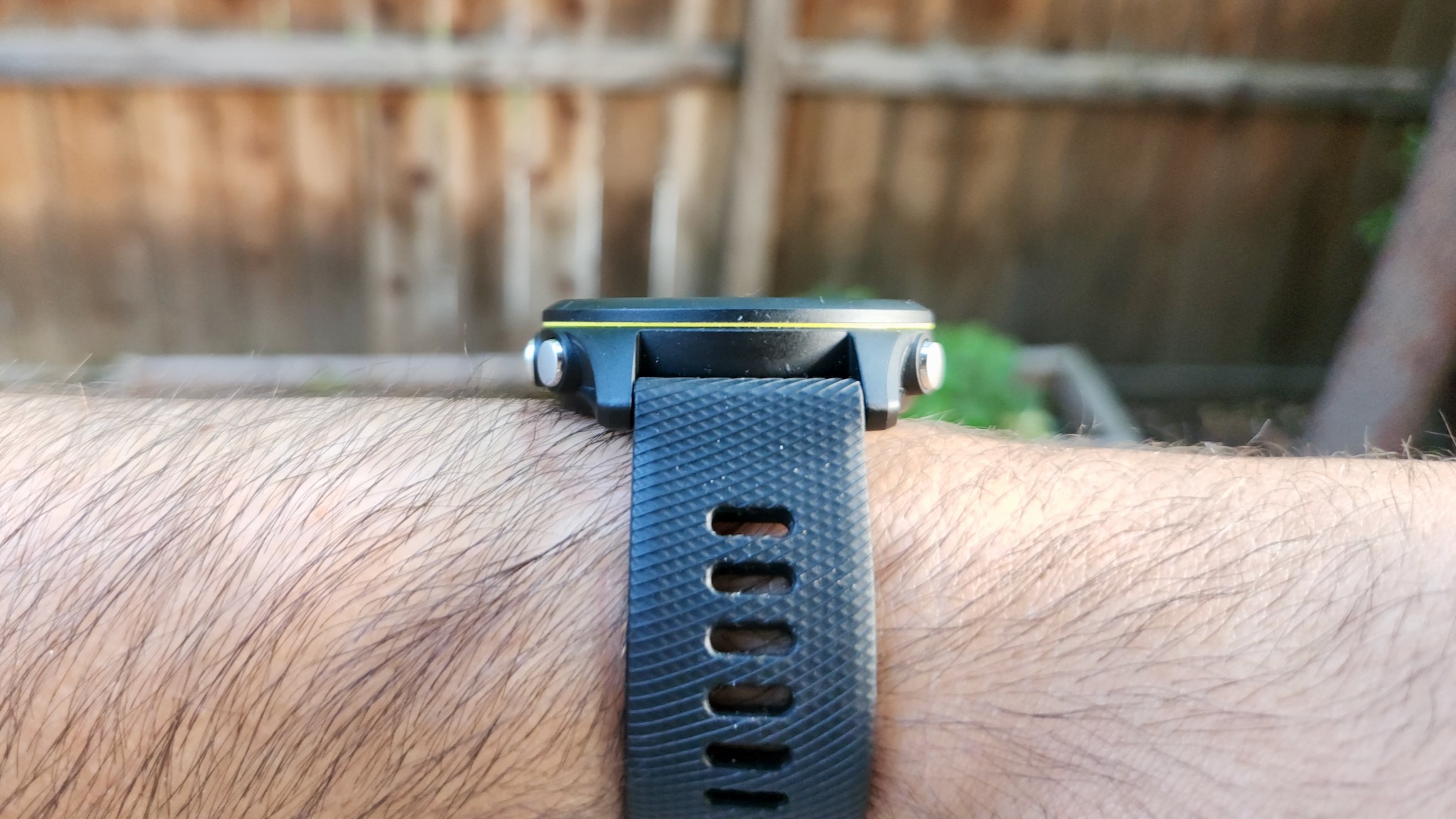
As for the Pulse Ox sensor, I don't have another point of reference to compare the results against, but I found they ranged from 91-96% when tested across a full day, changing nearly every measurement in five-minute intervals.
To be frank, I've never tested a Pulse Ox sensor on any watch that's consistent enough to rely on; so I'm grateful Garmin now offers HRV as an alternative to SpO2 for measuring your sleep recovery.
You get the standard five-button layout of most Garmin watches: a select/workout button on the top-right, a back button on the bottom-right, a display light on the top-left, and scroll up/down buttons on middle-left and bottom-left. Holding down the latter also pulls up your music controls, while middle-left gives you Settings and top-left Shortcuts.
I'm a bit disappointed by the Forerunner 255's buttons, unfortunately. They're somehow much squishier than past Garmin watches I've tested, leading to false presses. I've gotten used to pressing harder than it feels like I need to, which does the trick.
Garmin Forerunner 255: Display and Software
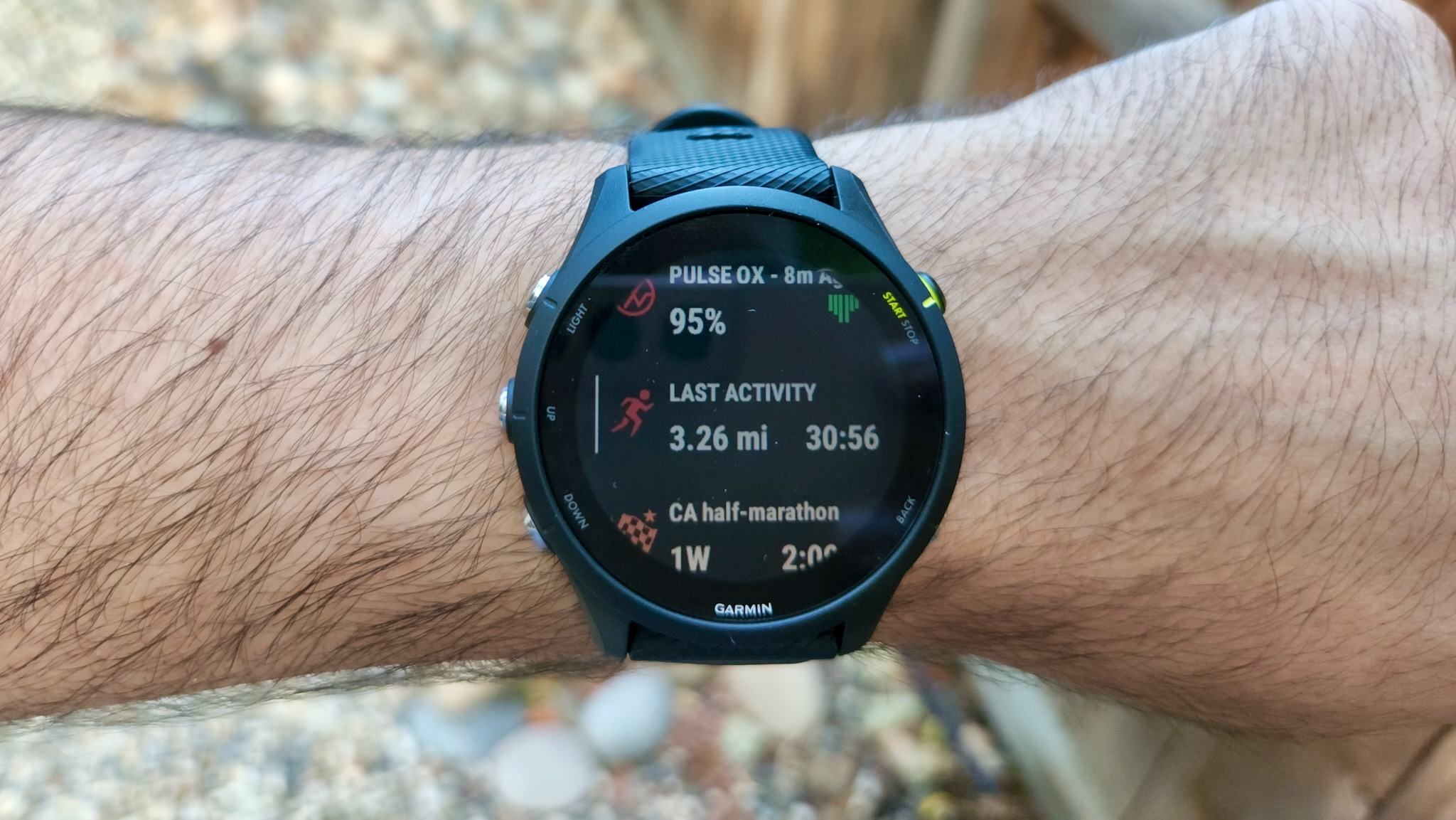
Most Garmin watches (or running watches with long battery life) use memory-in-pixel (MIP) LCD displays, which are visible enough in direct sunlight, but remain fairly dim indoors in low light. That hasn't changed with the Forerunner 255, which is what makes the full-sized 1.3-inch (33cm) display so tempting: It counterbalances the visibility issues by making notifications pleasingly large and text much easier to read.
One issue with any small circular watch is that it's difficult to make data and menus visible in any part of the screen besides dead center.
On smaller Garmin watches, when you scroll through your data highlights, you can basically see only one data set at a time; whereas with the Forerunner 255, that extra bit of space lets you see three fields at once. That's absolutely something I'll miss if I switch to the 1.1-inch (2.8cm) 255S.
Garmin watches' performance is always a bit relative, as their features are very limited compared to a lifestyle watch, and the company doesn't share RAM info. With that in mind, menuing is pretty smooth and lag-free, GPS tracking usually connects within 10 seconds or less, and downloading watch faces from Connect IQ is relatively painless.
The Forerunner 255 has 30 slots available for watch faces and apps from the Connect IQ store, with a 15MB maximum. Garmin has several custom watch faces available, or you can purchase third-party faces that display more information. You'll also find a few music and mapping apps, though the latter will be limited compared to what you can access on a Fenix.
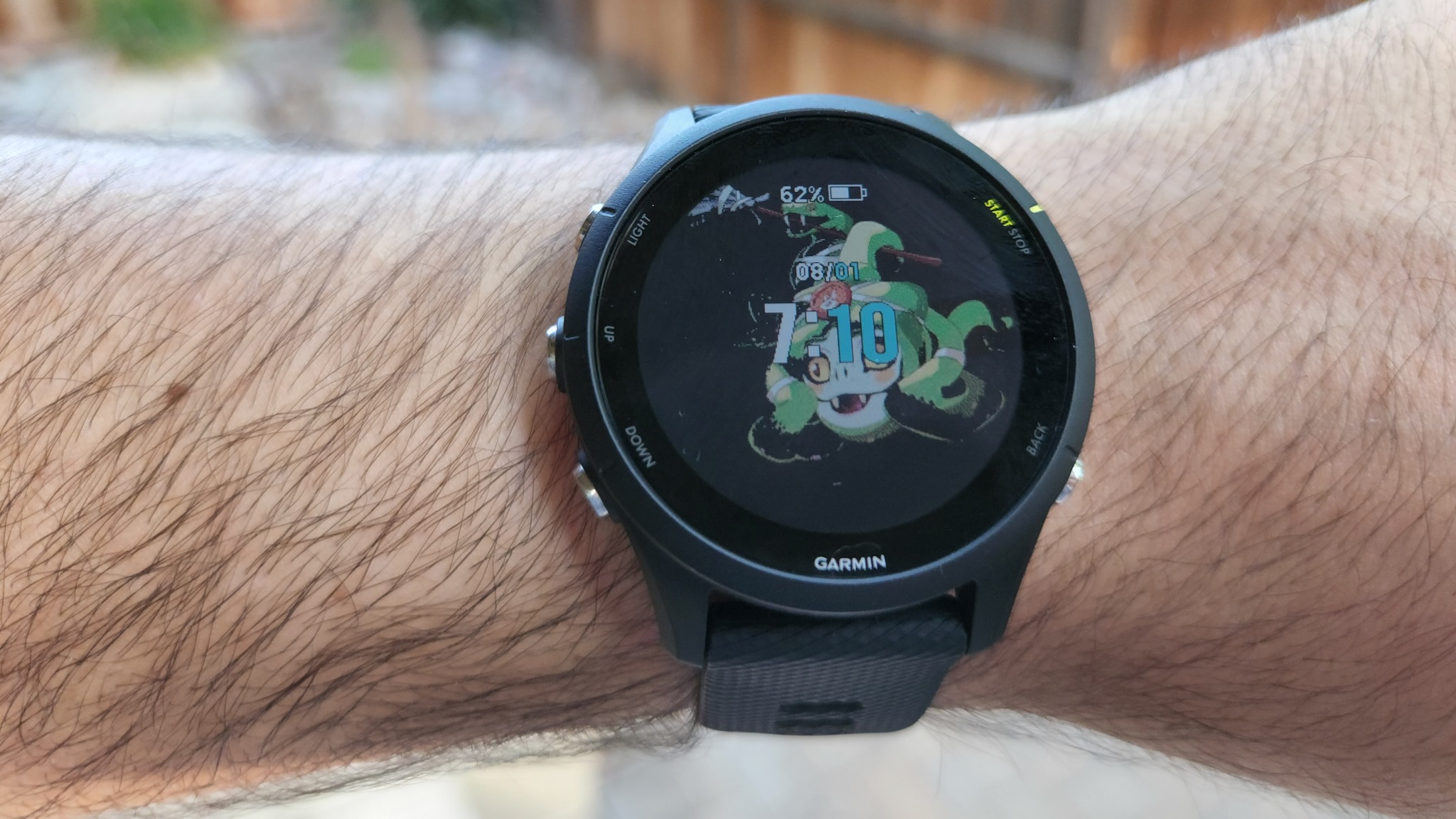
My main disappointment with Connect IQ is that you can only store one custom "Face It" watch face on your watch at a time. This tool lets you make a simple face with a photo of your choice, but installing a new face removes your current custom face, so I can't store an album's worth of faces in some of those 30 slots.
I'll also note that most photos don't look great on MIP displays, especially when the screen is dim. I ended up saving some custom video game art to my Photos folder, as they look better with limited pixels compared to anything "realistic."
In terms of features, that's where the Forerunner series shines for runners and triathletes. I loved the Venu 2 and Instinct 2 for different reasons, but a downside of both is that they're less specialized.
They offer all the core sports modes, sleep tracking, health snapshot, fitness age, and Garmin Coach — and Venu has useful gym tools like HIIT timers and animated exercises. However, Forerunner adds a bevy of tools that guide you before, during, and after runs that I miss with other Garmin lineups.
There truly isn't enough time to describe every feature, so I'll highlight personal favorites and new tools, starting with the Morning Report.
When you wake, you're greeted by a cheerful animated sunrise and a ton of information: Your sleep score, HRV status, local weather, shared calendar events, and your scheduled workout for the day.
You can also add your Body Battery score, weekly intensity minutes, and daily steps goal, whatever you need to get yourself properly motivated in the morning.
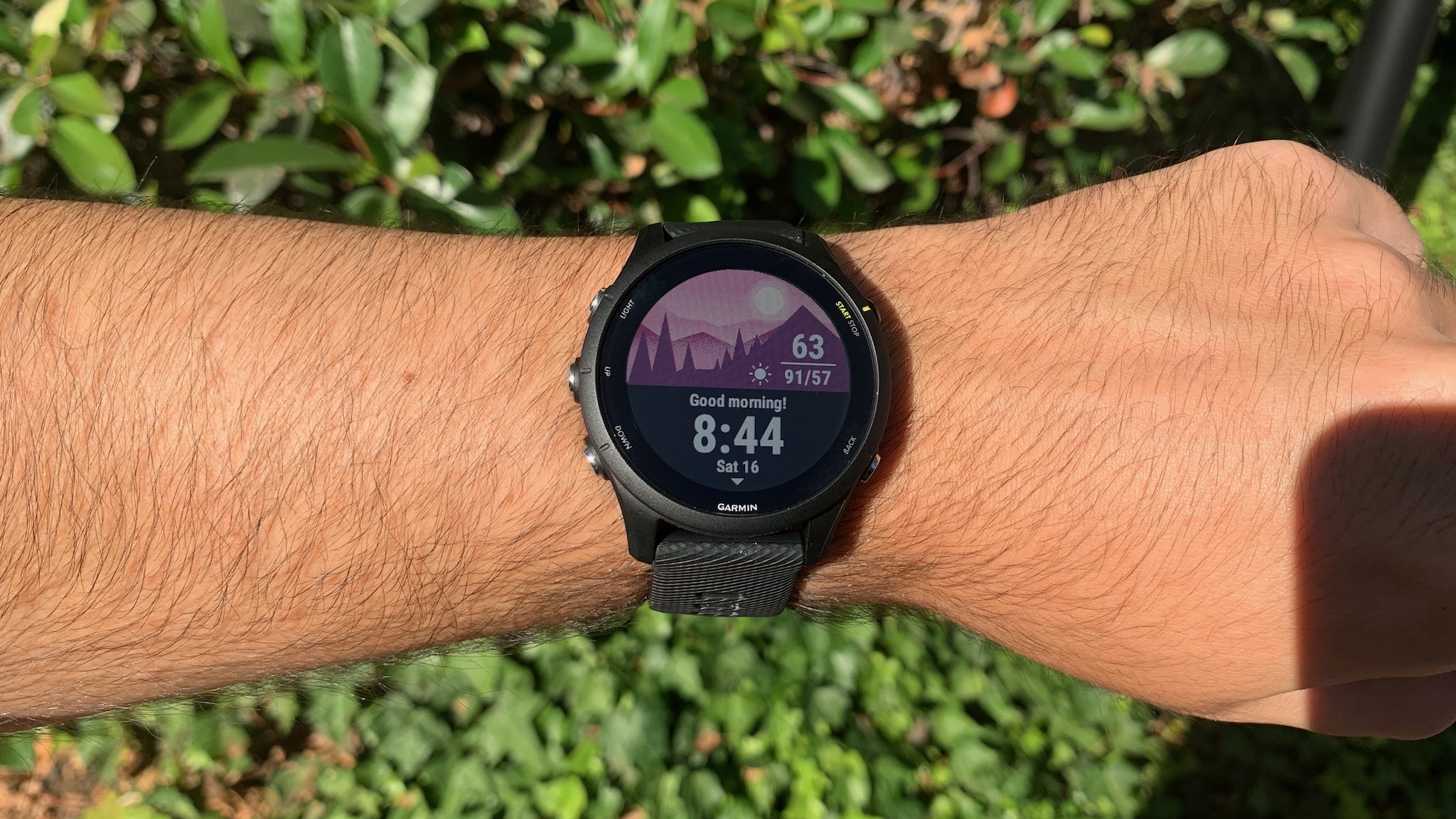
As someone who frequently loses track of his schedule, I'm a huge fan of the race widget, which displays the next race on your Garmin calendar. Garmin also includes the local weather that day, and your predicted pace based on your VO2 Max and past several weeks of training history. Garmin even takes the race into account for its daily suggested workouts — from base training and rest, to sprints and long runs — so you don't over-train during prep.
On this note, the Forerunner 255 is also much more useful for triathletes and track runners. For the former, you can simply start a triathlon activity and hit the Back button once to switch tracked activities. For the latter, you can choose which lane you're running in, and have the watch calibrate your exact distance and lap pace accordingly.
While you do have to use Garmin Connect to activate tools like Race Widget and PacePro, the Forerunner 255 is generally excellent at enabling tools on your wrist without having to drag out the app for detailed info.
For example, if you run with a Running Dynamics Pod, you can see your cadence and stride data directly on the 255, whereas that data is Connect-only for older watches like the 245.
Music storage hasn't changed much from previous models. You have a few GB of space, which you can use to store playlists from a few music apps — Spotify, Amazon Music, or Deezer, mainly — or from your own hard MP3 files via Garmin Express on your computer.
If you use a different streaming app, you may want to skip the Music upgrade and just use your phone's storage and the watch's playback controls. Or if you want more song storage, you'll want the Forerunner 955, which can store about 2,000 songs instead of just 500.
Overall, if you want to take full advantage of the Garmin Forerunner 255, you'll want to take an afternoon to look over the official manual and learn how to access its many features for yourself. You may see that as a downside compared to other running watches with simpler interfaces — especially if you're a runner that doesn't need as much hand-holding for training schedules or pacing.
Garmin Forerunner 255: GPS accuracy
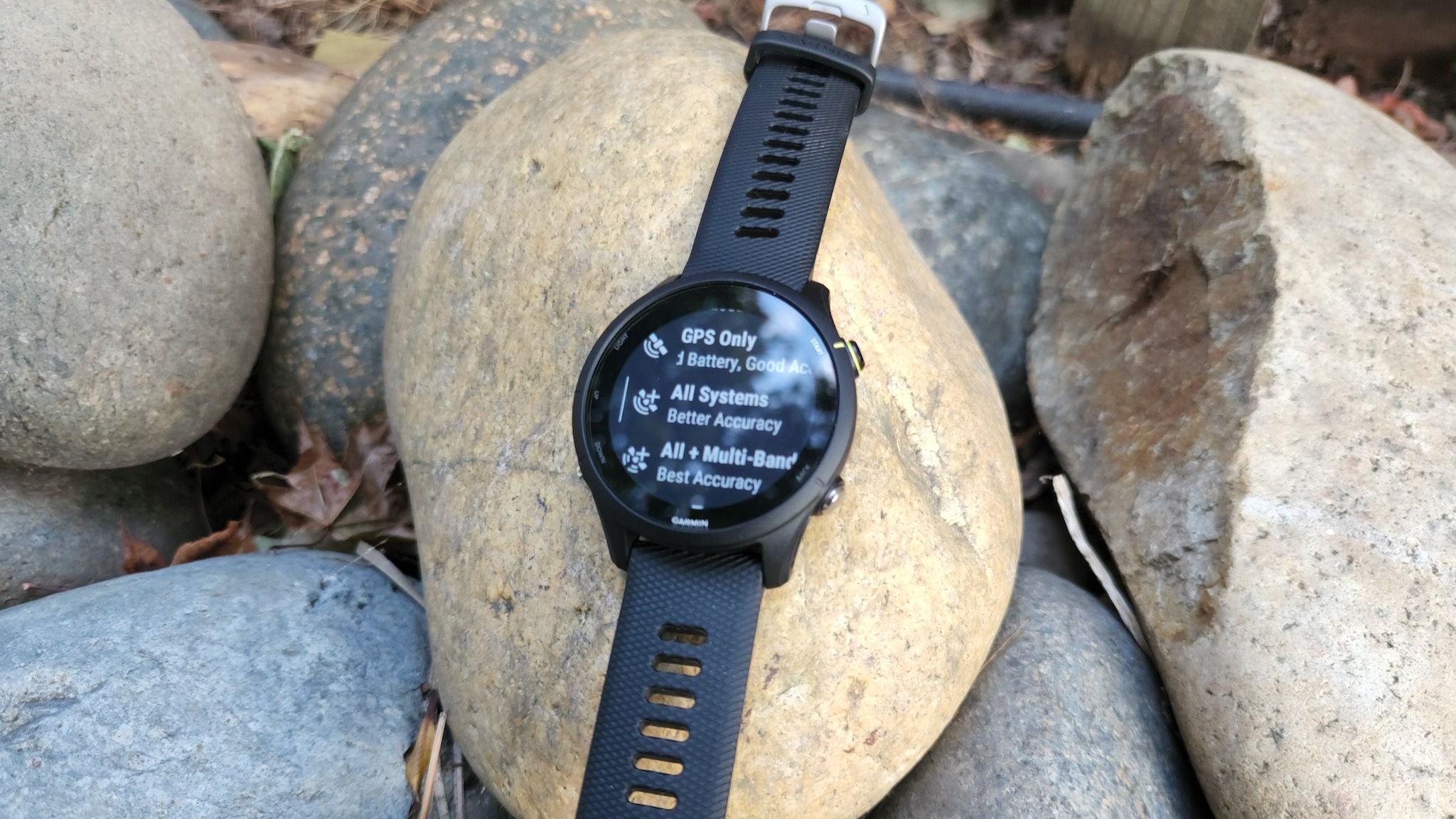
Garmin watches offer GPS, GLONASS, GALILEO, Beidou, and QZSS — the five main global navigation satellite systems (GNSS) — but only allow you to use one GNSS and one frequency at a time. But Garmin's premium watches like the Fenix 7, Epix, Tactix 7, and Forerunner 945 LTE offer "all systems" and "multi-band" tracking. The Forerunner 255 is the first relatively affordable Garmin watch to offer more exact location tracking.
All Systems doesn't actually use all five GNSS at once, but turns on multiple systems based on whichever gives the best data in your region, so they can collectively capture your location even in difficult environments with poor coverage, or obstacles like buildings or tree foliage. Similarly, multi-band or dual-frequency tracking uses both L1 and L5 frequency satellites that track you more consistently, and reduce errors caused by reflected signals.
According to Garmin, multi-band "can achieve accuracy within about +/- 2 meters or 6 feet under ideal conditions versus the +/- 3 meters or 10 feet accuracy of other models," without even taking into account its improved tracking in suboptimal conditions.
Garmin defaults the Forerunner 255 to "All Systems," but you can select "GPS Only" or "All + Multi-Band" for individual sport profiles, depending on whether you care more about battery life or location accuracy.
Having tested All Systems and Multi-Band across several weeks of runs, I'm extremely impressed with the accuracy thus far. I mostly run on surface roads and trails with little obstruction, but my tracked route has far less inaccurate drifting off course than I've seen tracked with other devices. When I took the Forerunner 255 to a national park with plenty of satellite-blocking forest and hills, it still seemed to track my progress extremely well.
Garmin Forerunner 255: Battery life
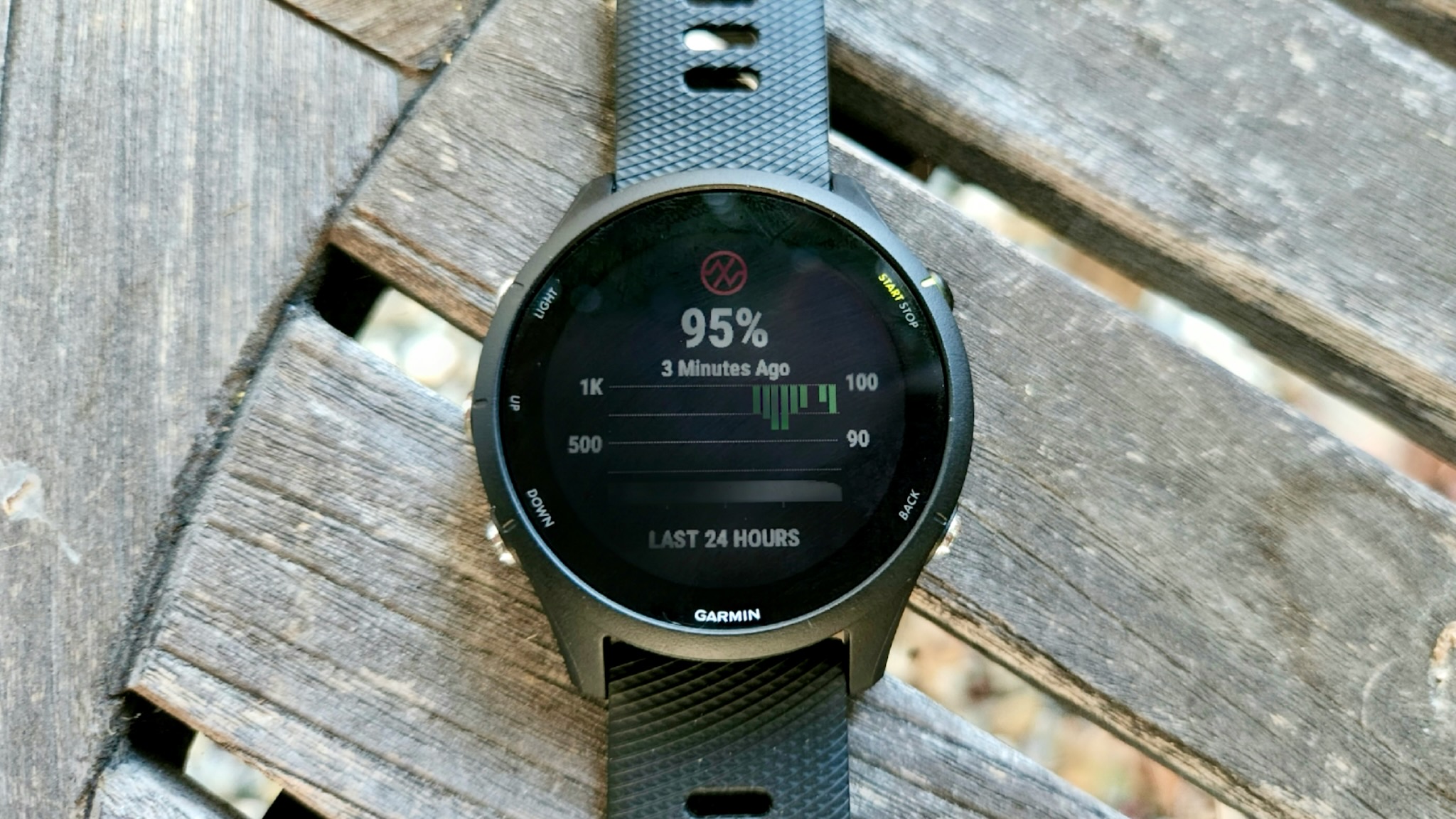
Along with more accurate tracking, the Garmin Forerunner 255 presents a major step up in battery life over the Forerunner 245.
The former watch would last seven days max, while the newer watch has a 14-day estimate that does hold up to scrutiny. During one week where I didn't track any workouts and enabled always-on SpO2 tracking for the final three days, the battery dipped to 46%. Without the latter, it appears the watch really will last a full two weeks per charge.
On top of that, the Forerunner 255 can track 30 hours of GPS-only mode, or 25 hours of All-Systems mode, at least according to Garmin's estimates. In practice, I found an hour of All-Systems GPS would usually drain about 5% of the battery, which comes closer to a 20-hour max.
But most watches fall short of companies' estimates, and in this case, Garmin's "underperformance" is far better than what you'd expect from a competitor's watch.
Multi-band GPS has a 16-hour estimate; you'll have to decide if losing an extra nine hours of battery life is worth it, given All-Systems is already an excellent upgrade over GPS-only. And with Music storage and GPS, the watch only lasts between six and seven hours.
If you choose the Forerunner 255S, the estimates dip to 12 days in smartwatch mode, 26 hours of GPS-only, 20 hours of All-Systems GPS, 13 hours of multi-band, and five or six hours of GPS and music.
If I get my hands on the smaller model, I'll put these numbers to the test, but even if it underperforms as well, you'll rarely find a 41mm watch that would offer anything close to these numbers.
Competition
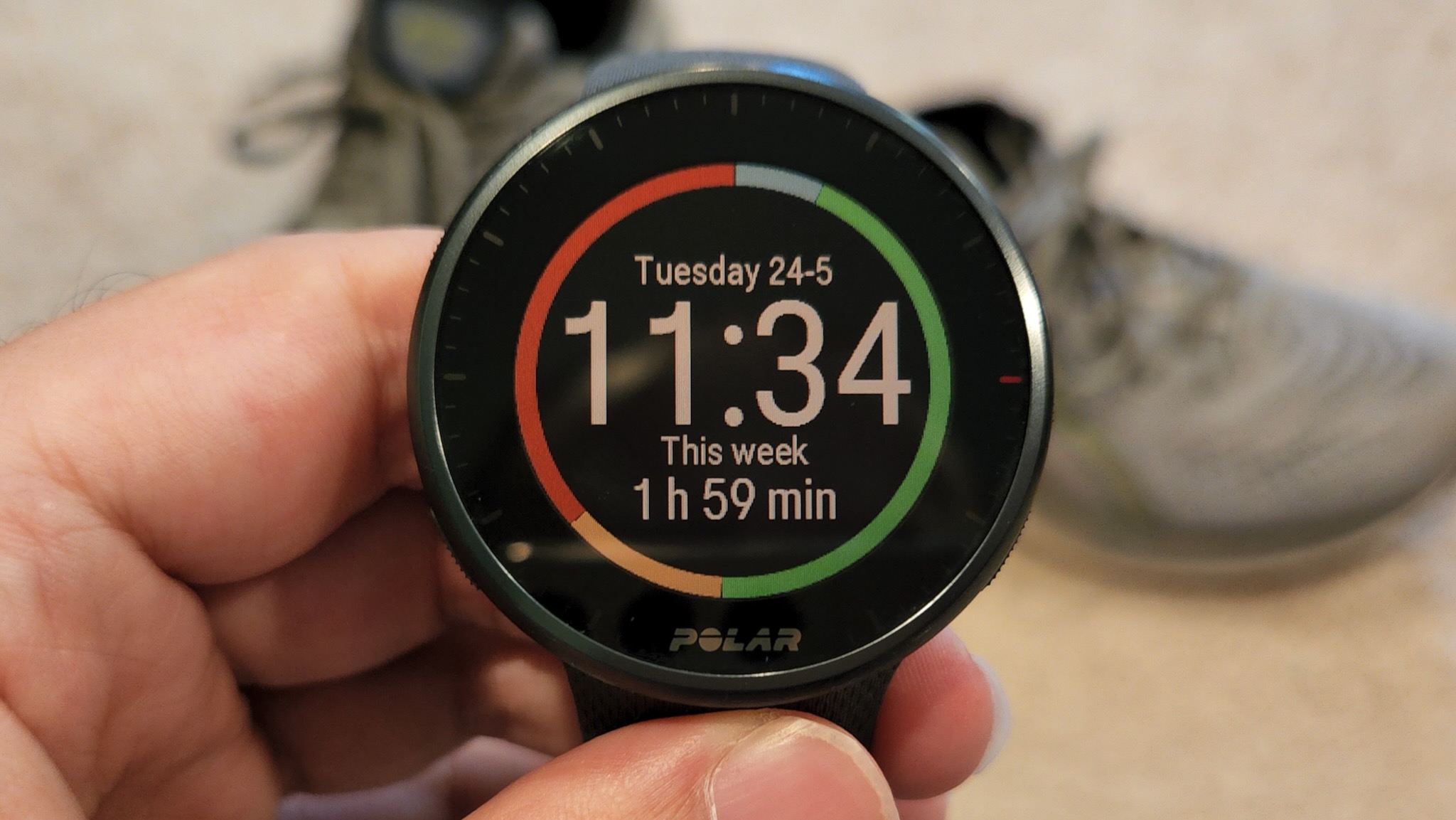
When it comes to the best running watches, you have several brands to choose from apart from Garmin, starting with Coros, Polar, and Fitbit.
One of my personal favorites is the Coros Pace 2, which also promises 30 GPS-tracked hours per charge and offers similar metrics and training data as Garmin. Weighing 29 grams and costing just $200, it's a lightweight bargain that gives you all the running essentials, but does miss out on tools like tap-to-pay and SpO2 tracking.
You can also consider the Polar Pacer Pro, another watch that will provide free running metrics and recommend workouts and cross-training based on your VO2 Max. It, too, lacks smarts like Pulse Ox and NFC payments, and has a shorter overall battery life, but the Pacer Pro is a more straightforward device for people that consider Garmin software a bit too complicated and hands-on.
Of course, you can't discount other Garmin watches. If the Forerunner 255 costs too much, the Forerunner 55 has a two-week battery life and many of the same software features for nearly half the price. Though, it's certainly more suited for independent runners. And at just 37 grams and 11.6mm thick, it's a more comfortable fit than before.
On the other hand, the Garmin Forerunner 955 has all the same perks as the 255 Music and more, for just $100 extra. It stores 4x the songs, adds a touchscreen for easier navigation, hits up to 42 GPS-tracked hours, and adds full-color maps for turn-by-turn navigation on unfamiliar routes, as well as real-time stamina tracking.
Garmin Forerunner 255: Should you buy it?
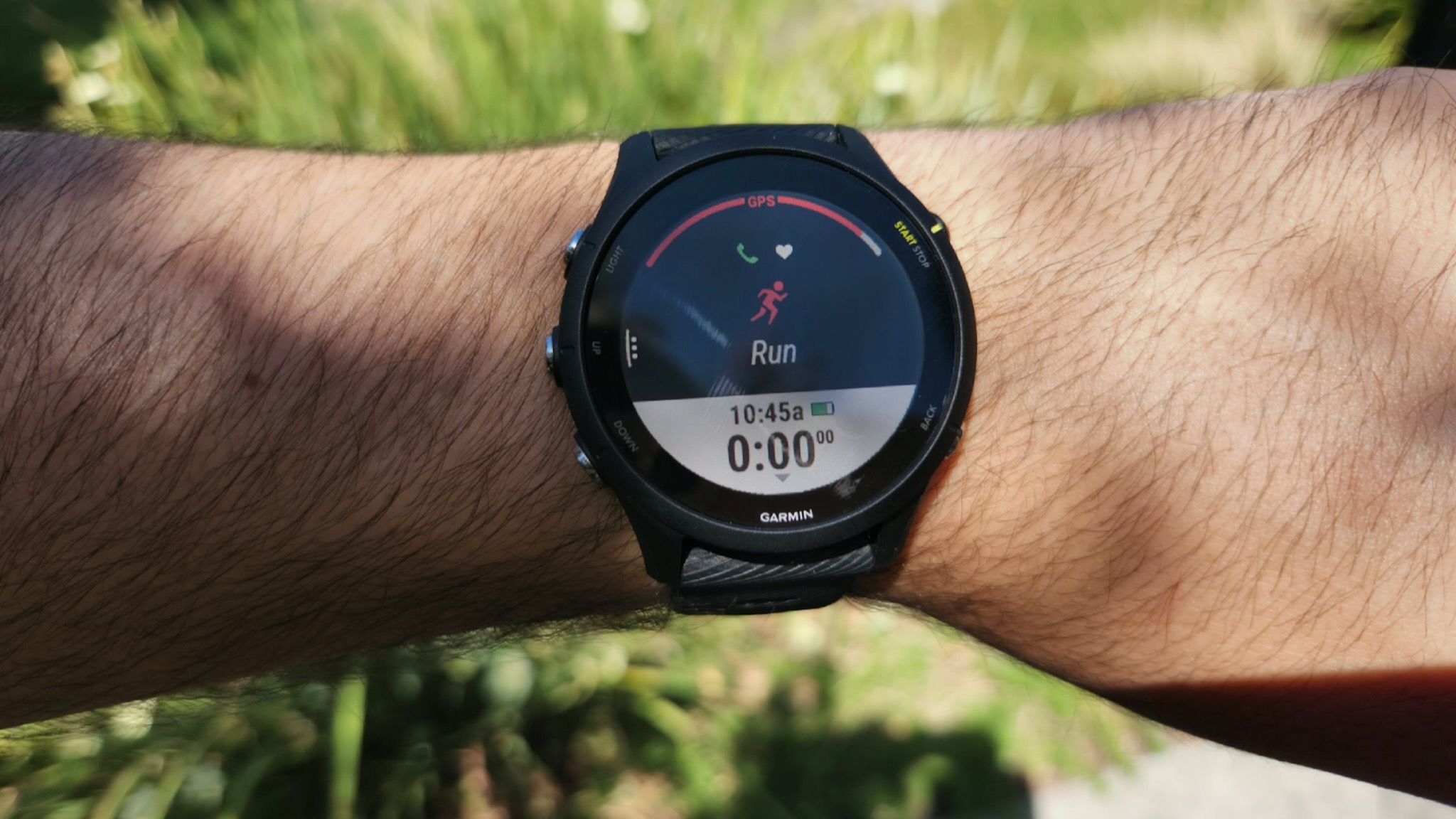
You should buy this if...
- You're a runner that likes to analyze performance
- You hate having to constantly recharge your battery
- You want the most accurate HRM and GPS results as possible
You shouldn't buy this if...
- You're a runner that doesn't need metrics or guidance
- You want touchscreen navigation
- You're on a strict budget
The Garmin Forerunner 255 won't be for everyone. If you want more smarts than simply checking phone notifications, you'll want to check out the Venu 2 Plus — which has a mic and speaker — or look at proper lifestyle watches like the Apple Watch or Galaxy Watch 4. Or if you want something that requires less effort to use and just tracks your steps and pace, a fitness tracker will cost (and weigh) a lot less.
But for a proper fitness smartwatch, you'll be hard-pressed to find any device that can compete aside from Garmin's more expensive offerings. The Garmin Forerunner 255 isn't the most affordable device, but keep in mind that the Forerunner 245 was the site's favorite option for three years until the 255 supplanted it. Plus, the lack of monthly subscription will more than make up for the high initial price. You'll get your money's worth if it helps you to keep pushing yourself.
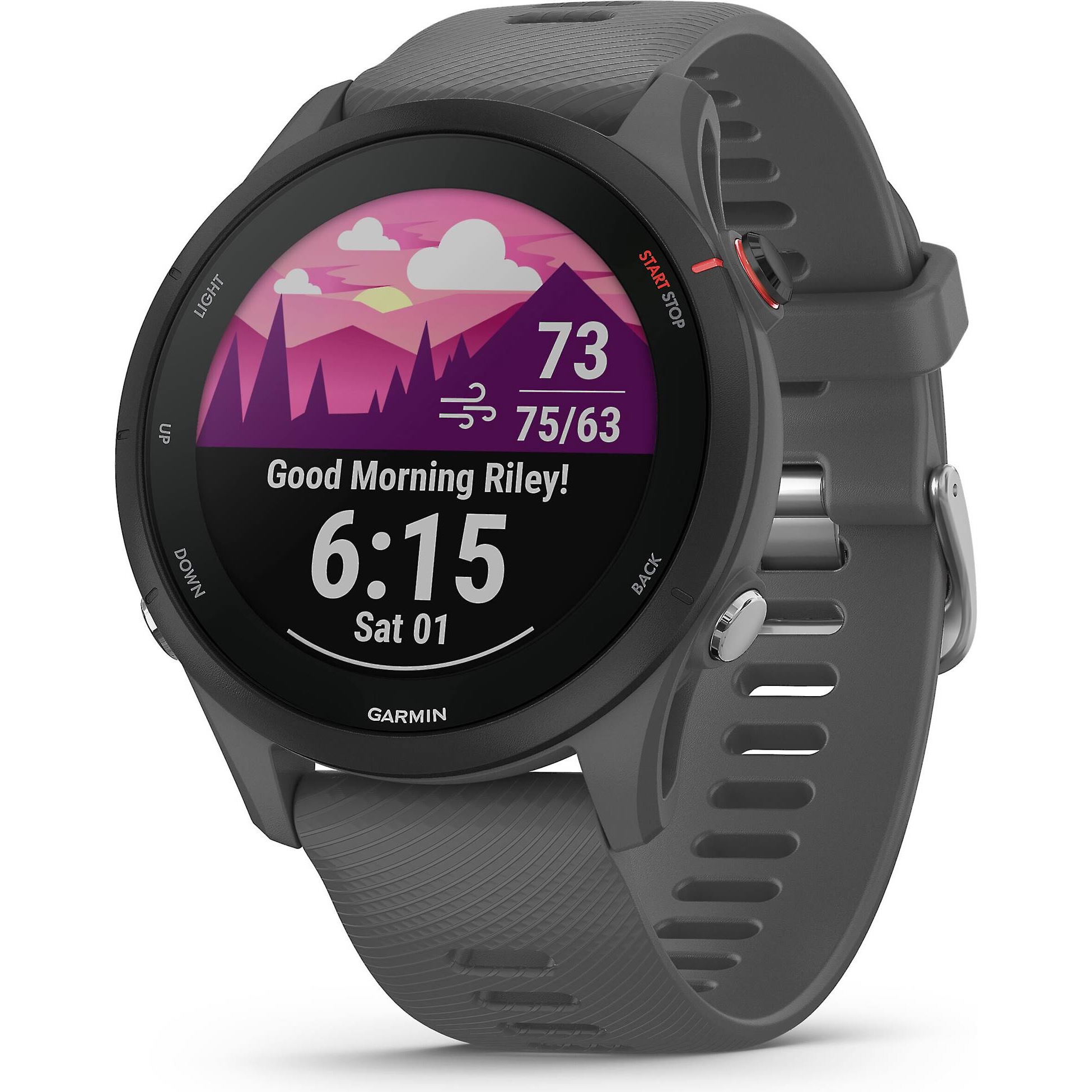
Hit the zone
The Garmin Forerunner 255 has the tools you need to guide you before, during, and after a workout, with a battery life that'll never die and all the core sensors to measure your progress over time. Just be careful to choose the right size for your needs, as some will prefer the 255's larger display and other will much prefer the compact 255S.

Michael is Android Central's resident expert on wearables and fitness. Before joining Android Central, he freelanced for years at Techradar, Wareable, Windows Central, and Digital Trends. Channeling his love of running, he established himself as an expert on fitness watches, testing and reviewing models from Garmin, Fitbit, Samsung, Apple, COROS, Polar, Amazfit, Suunto, and more.
